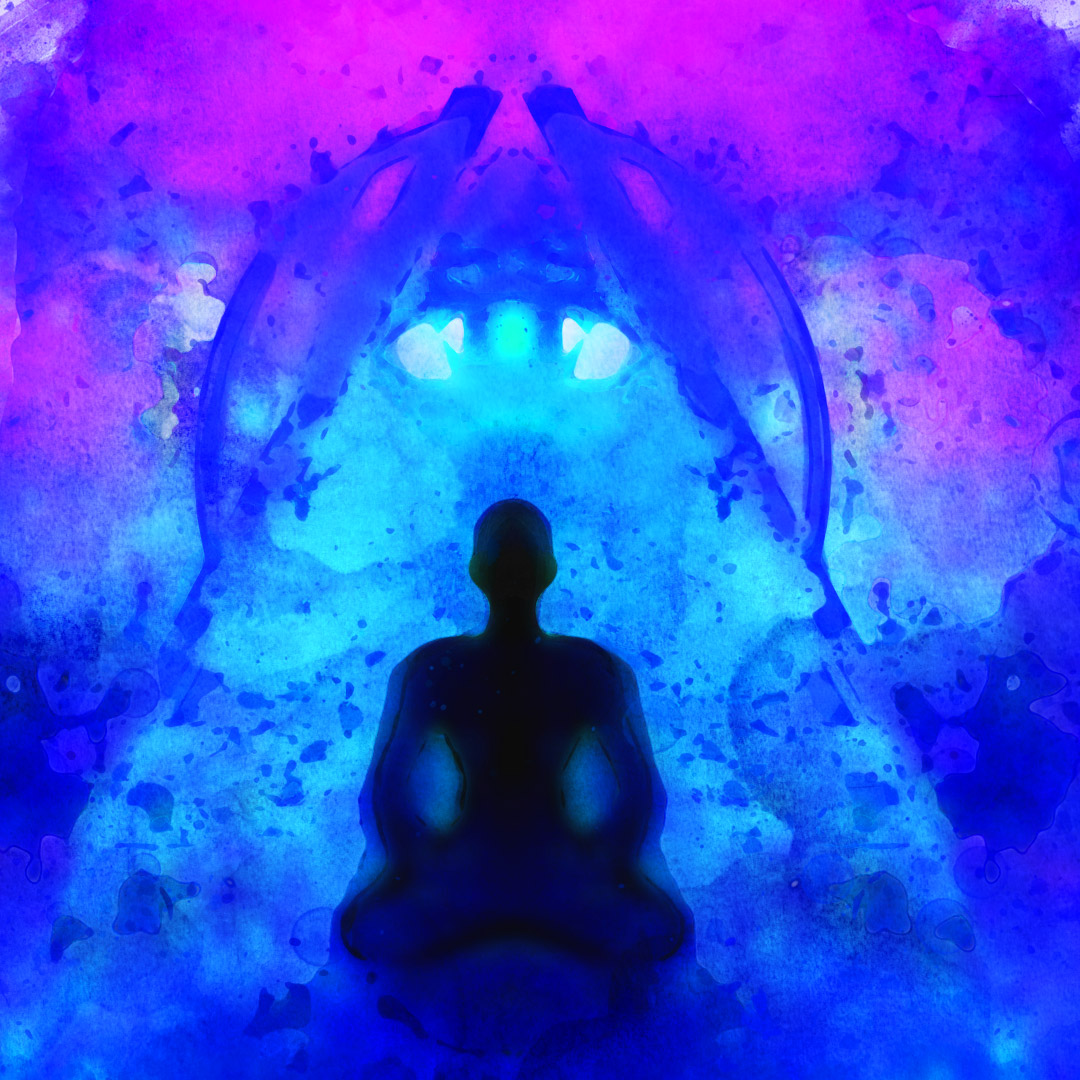Kriya is an advanced Raja Yoga technique that reinforces and revitalises subtle currents of life energy in the body, enabling the normal activities of heart and lungs to slow down naturally. As a result, the consciousness is drawn to higher levels of perception, gradually bringing about an inner awakening more blissful and more deeply satisfying than any of the experiences that the mind or the senses or the ordinary human emotions can give. (1)
Our eagerness for worldly activity kills in us the sense of spiritual awe.
-Lahiri Mahasaya
Introduction to Kriya Yoga
Kriya comes from the Sanskrit root kri, to do, to act and react; the same root is found in the word karma, the natural principle of cause and effect. “Kriya Yoga is thus ‘union (yoga) with the Infinite through a certain action or rite (kriya),” Paramahansa Yogananda writes in his Autobiography of a Yogi. “A yogi who faithfully practices the technique is gradually freed from karma or the lawful chain of cause-effect equilibriums.” (2)
Kriya Yoga plus devotion—it works like mathematics; it cannot fail.
-Paramahansa Yogananda
Kriya Yoga is the supreme technique for ‘yoga’ or ‘divine union’ that helps devoted practitioners to achieve liberation from all bondage.(1).
History/Origins
Kriya Yoga was discovered by illumined Indian sages thousands of years ago(1). The practice has been praised in the Bhagavad Gita by Lord Krishna himself, and also in the Yoga Sutras by sage Patanjali(1). According to Paramahansa Yogananda, Jesus Christ was aware of this ancient method of meditation, as were his renowned disciples St. Paul, St. John, and others(1).
Kriya Yoga was lost for centuries in the dark ages, and reintroduced in modern times by Mahavatar Babaji, whose disciple Lahiri Mahasaya (1828 – 1895) was the first to teach it openly in our era. “The Kriya Yoga that I am giving to the world through you in this nineteenth century,” Babaji told Lahiri Mahasaya, “is a revival of the same science that Krishna gave millenniums ago to Arjuna; and that was later known to Patanjali and Christ, and to St. John, St. Paul, and other disciples.”(2) Later, Babaji asked Lahiri Mahasaya’s disciple Swami Sri Yukteswar Giri (1855 – 1936) to train Paramahansa Yogananda and send him to the West to give this soul-revealing technique to the world.
Everything in future will improve if you are making a spiritual effort now.
-Swami Yukteshwar Giri
Benefits of Kriya Yoga
Jesus Christ said, “Why call ye me, Lord, Lord, and do not the things which I say?” Paramahansa Yogananda explains, “The secret of the saints is that they practiced what Jesus taught and exemplified; and by their single-hearted devotion they were able to attain ecstatic interiorization, as do adept yogis, which is necessary for communion with Christ.”(3) This is the goal of Kriya Yoga.
The benefits of the Kriya Yoga path of meditation are multiple. Through regular Kriya Yoga practice, one begins to experience a sense of inner peace along with greater clarity, understanding, and guidance from within. Kriya practice harmonizes the life force in the body, removing harmful stress and promoting health and vitality. Most importantly, it helps to attune one’s consciousness to the Divine, bestowing an unshakable inner bliss and security amidst all circumstances of life.(1)
Another great benefit is that it helps the meditators eradicate their negative habits and develop good ones. Yogananda stated, “Every time you meditate deeply on God, beneficial changes take place in the patterns of your brain.” When you practice Kriya Yoga you are automatically stimulating the divine potentials that God has placed within the spiritual centers in your spine and brain. (1)
References
- yogananda.org | The Kriya Yoga Path of Meditation
- Autobiography of a Yogi by Paramahansa Yogananda (Self-Realization Fellowship, Los Angeles, California)
- The Second Coming of Christ: The Resurrection of the Christ Within You (Self-Realization Fellowship, Los Angeles, Calif.)
- Self-Realization Fellowship/Yogoda Satsanga Society of India | Kriya Yoga: A Complete Path to Bliss
- SRF’s edition of Autobiography of a Yogi, which is the only complete edition—incorporating all of Paramahansa Yogananda’s wishes for his final text.






